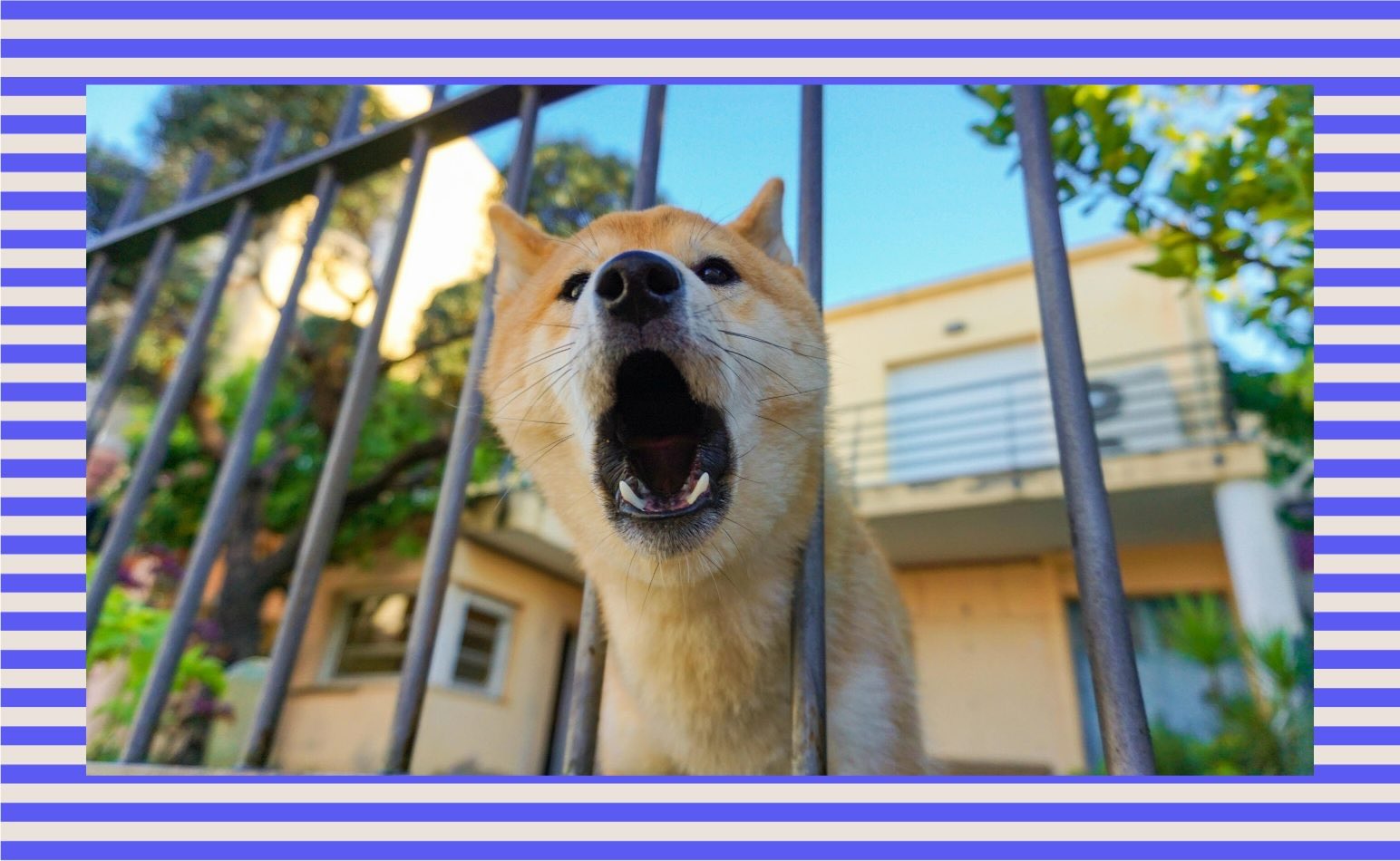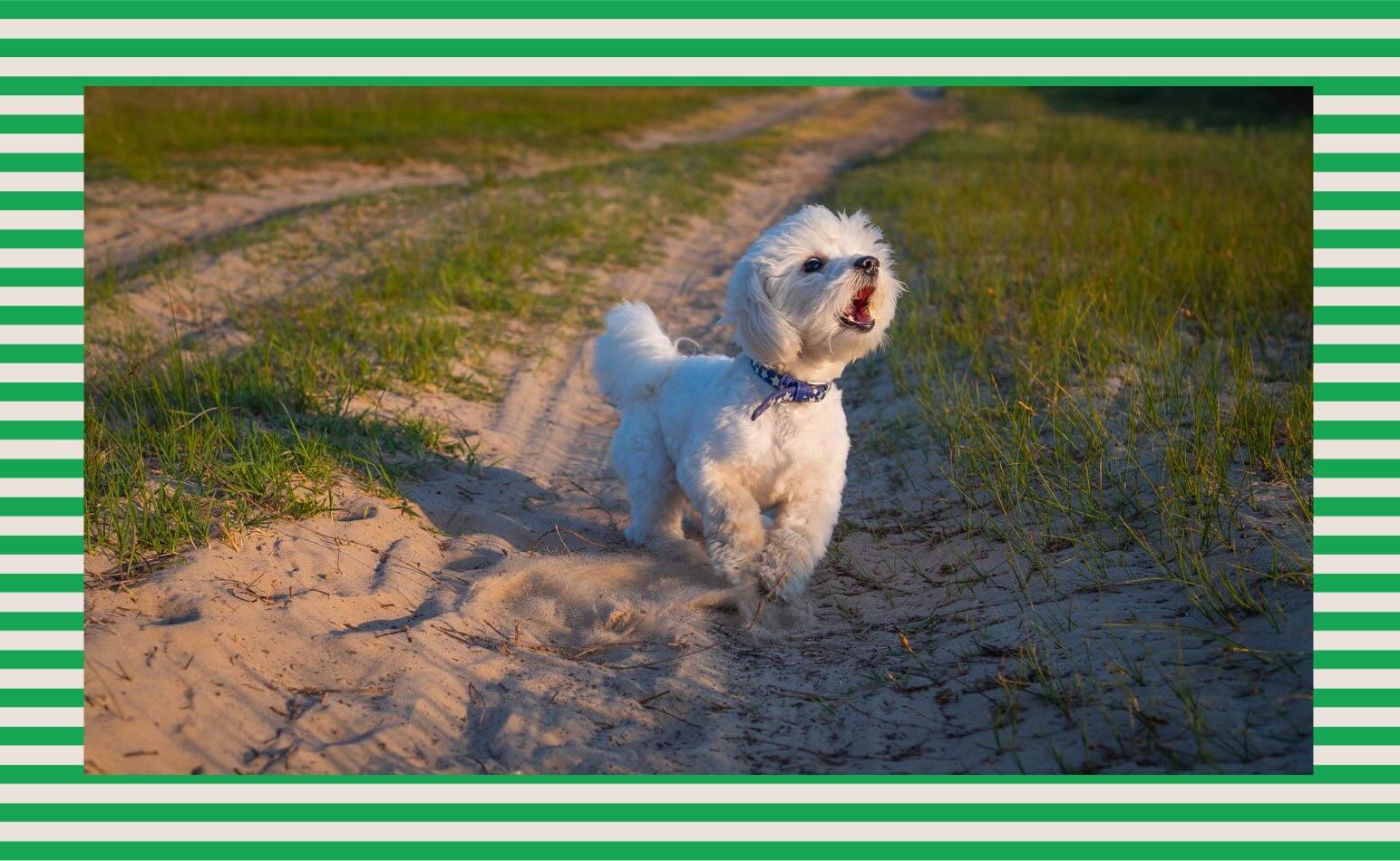Does your dog bark at… well, everything? You’re not alone. Barking is a perfectly normal canine behavior. In fact, humans actually selected for barking when we first domesticated dogs! Our companions’ alerts were helpful tens of thousands of years ago—but in today’s modern society, “too much barking” is a common behavioral problem.
Here’s what to try if your dog struggles with excessive barking. Start small, experiment, and figure out what works for your individual pup.
First: Understand your dog’s behavior
Before we try to change any of our dogs’ behaviors, we should take some time to understand where they’re coming from. Barking is common for multiple reasons—and I promise not a single one is because your pup is trying to annoy you.
It’s also worth noting that some dogs naturally vocalize more than others. Siberian huskies, for example, are notorious for drawn-out howls that almost sound like they’re trying to talk. (Anyone remember the viral “I love you” video?) Breeds selected to protect other animals or property—like many herding and livestock guardian dogs—might bark a lot, too. And any dog, regardless of breed, can have a stronger instinct to vocalize because of their individual genetics and early experiences.
Some barking will always be a normal part of having a dog.
Why do dogs bark?
- To alert you: Alert or alarm barking is most common when our dogs see or hear something unfamiliar, especially near our homes or places we visit often. They might feel a little startled and bark without thinking—or they might deliberately bark to get your attention. “Hey! Something’s out there!” Alert barks are often loud, sharp, and repetitive until the situation is addressed (either the person, dog, or other stimulus passing by goes out of view or you interrupt their behavior).
- Out of excitement: Lots of dogs bark during play or when they’re anticipating something exciting—like a walk, greeting a visitor, or getting dinner. These barks tend to be high pitched and short lived. (I always imagine these vocalizations as the real-life version of how Dug from the movie Up talks: An exclamation point after every sentence or even word!) Excitement barking can get out of hand if our pups aren’t able to regulate themselves.
- Because they’re bored: Dogs are intelligent, social creatures. Barking can be a cry for attention or even a form of self-entertainment. All pups have unique voices, but this type of barking can often be more monotonous and rhythmic. It probably happens most when you aren’t engaging with your dog.
- They’re anxious: Some dogs bark excessively when they’re left alone because they feel distressed. This barking is usually paired with other signs like pacing, whining, destruction, or attempts to escape—all symptoms of varying degrees of separation anxiety or isolation distress.

Second: Make a few tweaks to your daily routines
With a better understanding of where your dog’s barking might come from, you can start tweaking your environment and routine to help. Here are a few things to try!
Manage your dog’s environment
If your dog frequently barks out the window or when they hear certain noises, some simple environmental management can help them feel calmer. Consider blocking their view with window film and playing soothing background noise—like classical music or plain ol’ white noise—to prevent triggering moments.
Make sure your dog feels fulfilled
Proper fulfillment won’t, by itself, fix behavioral problems—but it’s one of the first things you should make sure is in place to help your dog feel content and ready to embark on a larger training plan. We’ve put together plenty of guides to help you enrich your pup’s life!
- Find your dog’s favorite enrichment activities
- 101 easy dog enrichment ideas
- Does enrichment have to be expensive?
- How to use puzzle toys thoughtfully
Be mindful of what you’re reinforcing
If your dog’s behavior (barking) succeeds in getting them what they want (attention, for example) they’re more likely to keep doing it. This is a key concept in all of dog training! Sometimes all it takes is paying a little more attention to how your own actions encourage your dog’s behavior.
The flip is true, too: If you ignore your dog when they’re quiet, you might be missing an opportunity to reward them for the behavior you like. It’s easy to only notice when they’re making a ruckus. But we should give them credit when they get things right, too!
Create clarity with cues
Teaching your dog to “speak” on cue might sound counterintuitive if you feel like you have a barking problem, but it can actually help you teach a “quiet” cue in tandem!

Third: Seek professional training help
If the above tips aren’t working for your pup—or if your dog barks, lunges, and otherwise reacts intensely in response to specific triggers (something often called “leash reactivity” or just “reactivity”)—consider getting in touch with a professional dog trainer. It’s great to have someone evaluate your pup’s behavior in person.
Training help is especially important if you think your pup struggles with separation anxiety or reactivity. Environmental tweaks and management are great for run-of-the-mill barking! But larger problems can be deeply rooted in fear, insecurity, and other emotions your dog needs help addressing.


What’s a Rich Text element?
The rich text element allows you to create and format headings, paragraphs, blockquotes, images, and video all in one place instead of having to add and format them individually. Just double-click and easily create content.

Static and dynamic content editing
Static and dynamic content editing
A rich text element can be used with static or dynamic content. For static content, just drop it into any page and begin editing. For dynamic content, add a rich text field to any collection and then connect a rich text element to that field in the settings panel. Voila!
How to customize formatting for each rich text
Headings, paragraphs, blockquotes, figures, images, and figure captions can all be styled after a class is added to the rich text element using the "When inside of" nested selector system.










.avif)